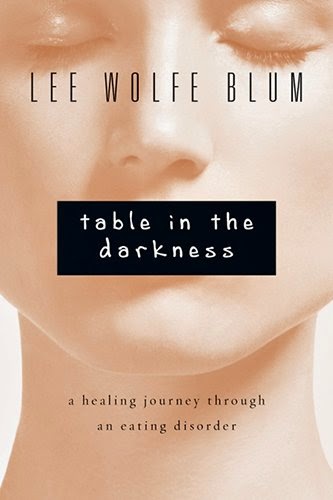What recovery looks like
Table in the Darkness: A Healing Journey through an
Eating Disorder
Author: Lee Wolfe Blum
Publisher: IVP Crescendo (www.ivpress.com/crescendo/)
Pages: 200
Ye fearful saints, fresh courage take;
The clouds ye so much dread
Are big with mercy and shall break
In blessings on your head (William Cowper).
The clouds ye so much dread
Are big with mercy and shall break
In blessings on your head (William Cowper).
Though inwardly compelled to make the review request, it
was with a sense of dread that I approached Table
in the Darkness by Lee Wolfe Blum. Even though many years ago I read with
interest and benefit Starving for
Attention by Cherry Boone O’Neill, I was slightly fearful of immersing
myself once again in the throes of an eating disorder. But like the lines from
the stanza by William Cowper, my fears proved groundless. Those clouds of dread
were quickly dissipated as I became engrossed in a story big with mercy that
brought blessing instead of condemnation.
It may be cliché, but nevertheless true, that this story
is not as much about eating as it is about intangibles that shape us more than
we realize. The disorder is a symptom of the lack of love and acceptance that
we all crave but ultimately can only be found in an intimate relationship with
God. Wolfe’s disorder was a flawed coping mechanism used to numb her pain.
It was an alter-ego that could bring a measure of comfort
but increasingly became dominant “Ed was mean and brutal, no longer a friend;
he was now a warden in my prison of his making. He was demanding and would say
anything to keep me trapped. I no longer had a voice to fight back, with Ed’s
voice so much louder” (104). This recounting of her self-talk, a major part of
her struggle, is insightful.
While this is “raw, real and revealing,” as Cherry Boone
O’Neill writes on the back cover, it’s a story told with dignity. It’s not gross
or too graphic. It is, however, told with so much honesty and recollection of
detail that this will be more than a little helpful for anyone with an interest
in this area.
I did not want to read more than a chapter a day, so that
I might prolong and savor the experience. I don’t want to narrate the
particulars, better to let Blum tell it. I extend to potential readers
something that I enjoy: the element of surprise.
This is not primarily self-help or a clinical evaluation;
although the last chapter does provide details of what Blum’s recovery looked
like. The points she enumerates are challenging but essential. Prior to this,
it remains a narrative of the highs and lows of her life from childhood to the
present. It includes a love story and the important roles played by family and
friends.
By illustrating from her life in a truthful manner rather
than just telling what a person with an eating disorder should do, the author
lets readers make their own connections and applications. When someone artfully
presents reality, it can be like looking in a mirror. I, therefore, see how I
am and how I might need to change.
This volume almost never came into being, and what a pity
if that had been the case. It’s an extremely helpful and hope-filled book. I’m
thankful for author’s vulnerability and the publisher’s willingness to put this
amazing redemption story into print.
I note in passing that this is under a new imprint, IVP
Crescendo. I heartily applaud the expressed intent: “IVP Crescendo is a new
line that celebrates the significant and serendipitous results that arise
wherever women apply their vision and gifts to the good of the whole church.” I
will be interested to see and perhaps review what other titles spring from this
line. Ladies, may I suggest that you keep your eye on their webpage.
I almost missed the grace found here because of those
clouds of dread. I need to remember: there is no fear in love! Don’t shy away
from this one. Any clouds of reluctance may be the precursor to God’s fullness
raining down.





No comments:
Post a Comment